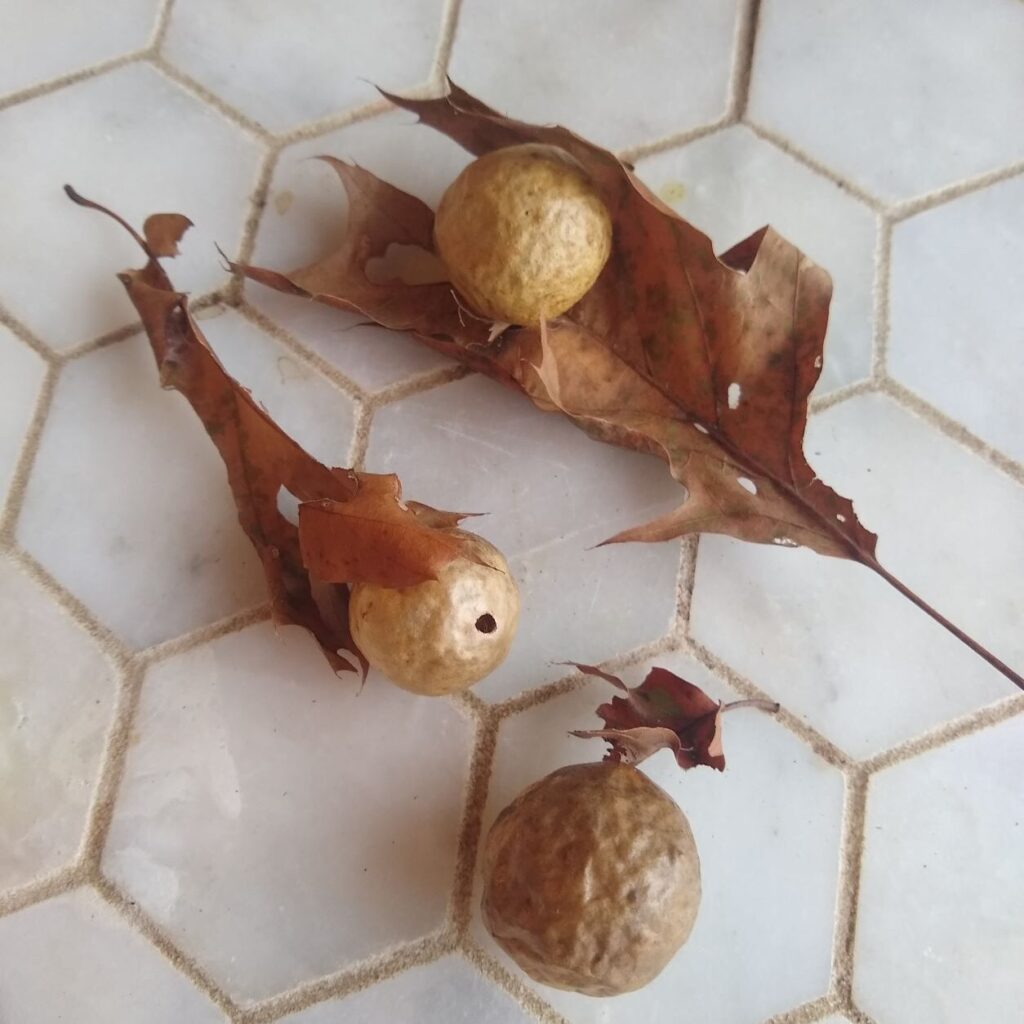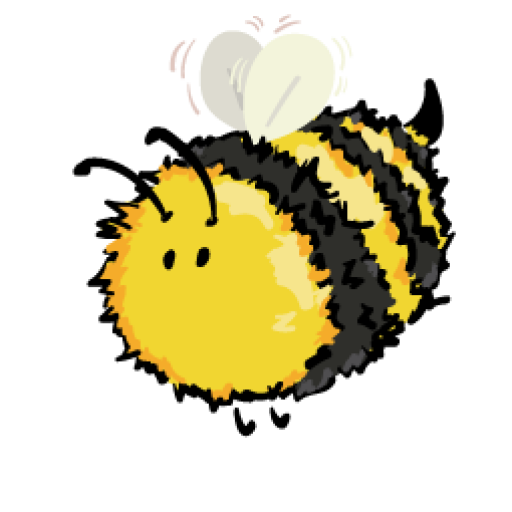
Why build a nursery for your baby when you could have an oak tree do it for you?
The adult gall wasp lays its egg in a growing part of the tree, like a leaf bud, in the spring. The oak responds to the activity by forming a growth around the disturbance – a gall. The gall contains the wasp, but also… contains it. The little wasp egg gets a snug little nursery, both shelter and food – free room and board — as it feeds on the still growing and nutritious walls of its home. When the baby wasp is all done growing up, it chews a little round exit hole for itself (seen in the photo of galls above). Off the wasp goes to begin the cycle all over again.
There are many insects, fungi, bacteria, etc that result in the growth of galls. Large oak galls like the ones shown above are likely made by the Amphibolips quercusinanis wasp.
These galls often fall to the forest floor, bright green with red spots when fresh, drying to papery brown. They’re one of the treasures I keep an eye out for when I’m out for a walk, as they’re a key ingredient in a historic natural ink. I find the wild turkeys are great friends to me in this quest, as they seem to leave the gall behind when they dig up the forest floor. See the photo below for an oak gall as I found it, in a perfect tiny clearing. Thanks turkeys!

Mixing oak galls with iron salts results in a rich black ink (albeit one that sometimes eats through paper). It’s a project I’ve had percolating for a few years now, and I hope to make a batch this spring/summer. Collecting enough of the right galls has been a slow but very enjoyable process. And I almost always remember that I put a papery delicate gall in my pocket and don’t crumble it to dust by jamming a chilly hand quickly in a pocket later on the same walk. Almost always.
“Let there be gall enough in thy ink”
~William Shakespeare, Twelfth Night
~Kate
Read more about oak galls, wasps and ink at:
- Naturally Curious with Mary Holland (webpage)
- The Mystery of the Ozark Oak Leaf Gall (webpage)
- “Tracks and Signs of Insects and Other Invertebrates” by Charley Eiseman and Noah Charney (book)
- Make Ink by Jason Logan (book)
